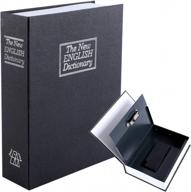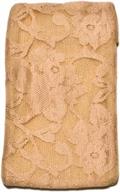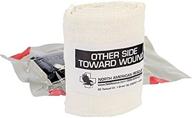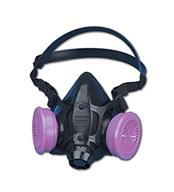Be Prepared With a First Aid Kit for Life's Unexpected Injuries and Illnesses
Having a well-stocked first aid kit in your home and car can help you quickly treat minor injuries and provide initial care for more serious medical issues. You never know when an accident might happen, so it's important to be prepared for life's unexpected events.
Why Every Household Needs a First Aid Kit
Even small cuts can get infected if left untreated. A first aid kit contains supplies to help stop bleeding, protect wounds, and prevent infection. For example, applying an antibiotic ointment and bandage to a scrape can promote healing and reduce risk of complications. A first aid kit also provides materials to treat sprains, burns, stings, and other common injuries.
In addition, prompt first aid can help minimize the impact of emergencies like choking, allergic reactions, asthma attacks, and sudden illnesses. Having the right supplies allows you to take quick action while waiting for medical assistance.
Recommended Supplies for a Home First Aid Kit
Customize your home first aid kit based on the ages and health conditions of family members. Some essential items include:
- Bandages of assorted sizes for covering wounds
- Gauze pads and rolls for stopping bleeding and wrapping injuries
- Adhesive tape for securing dressings and bandages
- Antibiotic ointment to prevent infection
- Antiseptic wipes for cleaning wounds
- Pain relief like acetaminophen, ibuprofen, or aspirin
- Digital thermometer for checking body temperature
- Tweezers for removing debris from wounds
- Scissors and safety pins
Also consider adding:
- Aloe vera gel for treating burns
- Antihistamines for allergic reactions
- Hydrocortisone cream for skin irritations
- Antacid for heartburn or indigestion
- Laxative for constipation relief
First Aid Kit Considerations by Age and Health
| Group | Additional Supplies |
|---|---|
| Infants and children |
|
| Elderly members |
|
| People with chronic illness |
|
First Aid Kit Storage and Maintenance
Store your first aid kits in easy to access places like the kitchen, bathroom, and car. Make sure to replace expired medications and other perishable supplies. Restock any items used to care for injuries and review kit contents twice a year.
Having the right first aid supplies can provide immediate care and relief for life's bumps and bruises. Prepare your home and family by investing in a well-stocked first aid kit today.
Introduction to First Aid Kits and Their Importance
Having a first aid kit readily available can help you quickly treat minor injuries and provide vital care in emergency medical situations. First aid kits contain supplies that are designed to treat cuts, abrasions, burns, sprains and other common injuries.
What is a First Aid Kit?
A first aid kit is a collection of medical supplies that is used to administer initial care for injuries or sudden illnesses. First aid kits can vary based on their intended use, but most contain certain basic items like:
- Adhesive bandages of assorted sizes
- Sterile gauze pads
- Adhesive tape
- Antiseptic wipes
- Antibiotic ointment
- Disposable gloves
- Scissors
- Tweezers
- Digital thermometer
- Cold pack
First aid kits may also contain medications like acetaminophen, antihistamines, hydrocortisone cream, antacids and laxatives. Tools like flashlights, emergency blankets and a first aid manual are also often included.
Benefits of First Aid Kits
Having a first aid kit readily available provides several important benefits:
- Allows prompt treatment of minor wounds to prevent infection
- Provides supplies to stop bleeding and bandage injuries
- Enables treatment of burns, rashes, sprains, and other common problems
- Contains medications to relieve pain, fever, allergies, and other symptoms
- Allows stabilization and care for serious injuries or illnesses until professional medical treatment can be accessed
- Reduces anxiety during medical emergencies when supplies are easily accessible
Recommended First Aid Kit Locations
It's important to store first aid kits in easy to access locations so supplies can be reached quickly in an emergency. Recommended places include:
- Home bathrooms and kitchen
- Workplace medical rooms and near chemical storage areas
- In vehicles
- School nurses office and gym areas
- Public places like shopping malls, airports, parks, and pools
For the home, keep a first aid kit on each level of the house. For the car, secure kits in the trunk or cargo area.
First Aid Kit Maintenance
Check first aid kit contents regularly and replace any used or expired items. Perishable materials like medications, gloves, and cold packs should be refreshed yearly. Restock kits after use and do a full inventory check every six months. Keep extra essential supplies on hand for quick resupply.
Having well-stocked first aid kits in key locations enables prompt treatment of injuries and improves outcomes in medical emergencies. Consider adding kits to your home, workplace, vehicle and travel bags.
Types of First Aid Kit Contents for Different Needs
While all first aid kits contain some basic universal items, the specific contents can vary greatly depending on the kit's intended use. Packing appropriate supplies allows first aid to be administered effectively for injuries or illnesses that may occur in a particular environment or activity.
Home First Aid Kits
Home first aid kits treat common household injuries like cuts, burns, sprains and rashes. They should contain:
- Bandages, gauze, tape, antiseptic wipes
- Pain relievers, anti-inflammatory medication
- Thermometer, tweezers, scissors
- Latex gloves
- Antibiotic and hydrocortisone ointments
- Cold pack
- CPR breathing barrier
Consider the ages of family members and add supplies accordingly. For example, include infant thermometers, medicines, bandages for children. Have extra strength pain relievers, blood pressure monitor for elderly members.
Vehicle First Aid Kits
Vehicle first aid kits treat injuries from accidents along with travel-related issues. Include:
- Gauze, tape, bandages, disposable gloves
- Antiseptic wipes, antibiotic ointment
- Trauma pads, compression dressing
- Space blanket, scissors, tweezers
- Pain medication, antihistamine
- Bottled water, poncho, flashlight
- Jumper cables, flares, reflective triangle
Workplace First Aid Kits
Workplace first aid kits address injuries common to the specific environment. For offices, include:
- Bandages, gauze,medical tape, gloves
- Burn gel, antibiotic ointment
- Eyewash, cold pack
- CPR mask, trauma pads
- Pain relievers, antihistamines
For industrial sites, also add chemical burn treatments, splints, tourniquets and wound closure devices.
Camping/Hiking First Aid Kits
Outdoor first aid prepares for remote injuries like cuts, sprains, burns, rashes. Contents include:
- Bandages, gauze, medical tape
- Antibiotic ointment, antiseptic wipes
- Tweezers, scissors, safety pins
- Pain medication, antihistamines
- Second skin treatments
- Antidiarrheals, electrolyte supplements
- Emergency space blanket, gloves
Add supplies like splints, sutures, tourniquets for extensive hiking and survival kits.
Tailor first aid kits to likely risks and injuries for optimal emergency preparedness. Properly stocked kits can provide critical treatment when medical care is delayed or inaccessible.
Features to Look for When Selecting a First Aid Kit
Choosing a thoughtfully designed first aid kit can help ensure you have the right supplies conveniently at hand when accidents or emergencies occur. Consider key features like portability, waterproofing, and case type when selecting a kit for your specific needs.
Portability
Look for compact, lightweight kits if you plan to take your first aid supplies on the go. For example, backpackers and hikers often carry mini kits that contain only essentials like bandages, ointment, pain reliever, and gauze.
For travel in vehicles, choose a kit in a hard plastic case that can be secured in the trunk or cargo area. Larger portable kits with removable interior trays allow you to bring only what you need while keeping bulk supplies in the car.
Waterproofing
Water exposure can damage medical supplies. If you participate in water sports or adventures, select a waterproof hard-shell first aid kit that floats and keeps contents dry.
Look for kits rated as IP67 waterproof, meaning they are dust-tight and can withstand immersion in 1 meter of water for 30 minutes.
Case Type
First aid kit cases come in different materials:
- Soft packs are lightweight but offer minimal protection.
- Hard plastic is durable but heavier.
- Fabric cases with internal organization are lightweight while protecting supplies.
- Molded cases seal tightly to keep out moisture and dust.
Consider the use environment and opt for durable hard-sided cases for demanding conditions. Make sure any case includes interior compartments to organize and secure kit contents.
Other Helpful Features
- A clear window on soft cases allows you to view contents at a glance.
- Reflective markings help identify kits in low light.
- External pockets provide quick access to essentials.
- Shoulder strap allows for easy carrying.
Take time selecting a first aid kit designed for your specific needs. The right features will allow you to safely and conveniently transport vital medical supplies.
Tips for Restocking and Maintaining Your First Aid Kit
A well-stocked first aid kit is useless if supplies are missing, expired, or damaged. Proper maintenance ensures your kit is ready to provide critical treatment when an emergency occurs.
Check Expiration Dates
Medications, ointments, gloves, and other perishable items expire. Check all expiration or use by dates and replace anything that has surpassed its shelf life. For example, replace:
- Medicines within 1 year of opening or expiration date
- Antibiotic ointments within 1-2 years
- Gloves every 2-3 years
- Adhesive bandages after 3-5 years
Discard and replace any products in unusable condition like cracked ointment tubes or faded adhesive strips.
Restock After Use
Replenish first aid kit contents as soon as possible after treating an injury. Do a quick inventory check to identify depleted items like bandages, antibiotic cream, pain reliever, etc. Replace these supplies promptly to restore preparedness.
Routine Replacement of Key Items
Certain first aid kit components should be replaced regularly, even if unused:
- CPR masks - replace every 1-2 years or after use
- Cold packs - replace every 2-3 years as they lose effectiveness
- Flashlights - replace batteries every year
- Food/medications - follow expiration dates
Perform Inventory Checks
Do a full first aid kit inventory check every 6 months. Open the kit and examine all contents to look for:
- Missing, depleted or expired items
- Products in damaged packaging
- Supplies that may need restocking based on family needs
Restock any depleted, missing or out-of-date items.
Consider Your Needs
As your family and activities change, reevaluate and update your first aid kit contents. For example, add pediatric supplies when kids arrive or medications for chronic conditions.
Proper first aid kit maintenance takes little time but ensures life-saving supplies are on hand when you need them most.
Similar products
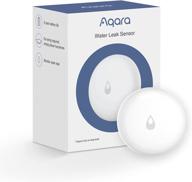

31 Review

Be Prepared For Any Emergency With A First Aid Kit
A first aid kit is an essential item to have in any home or workplace. It can save a person's life in an emergency and is also a legal requirement in many workplaces. The contents of a first aid kit should be based on the types of emergencies that may occur in the area. A well-stocked first aid kit should contain items such as dressings, bandages, over-the-counter medicines, special medicines for members of your household, latex gloves, and a first-aid guide. The American Red Cross recommends that a first-aid kit for a family of four should include items such as absorbent compress dressings, adhesive bandages of various sizes, gauze pads, adhesive bandage tape, antiseptic wipes, hydrogen peroxide, antibiotic ointment, hydrocortisone cream, and a thermometer. It is important to keep your first aid kit in a cold, dry place that is out of reach of children. Remember to check your first aid kit regularly and replace any expired items.
How Often Should You Check And Restock Your First Aid Kit?
According to various sources, it is recommended to check and restock your first aid kit regularly to ensure that it is always ready to use in case of an emergency. Here are some guidelines:
It is important to properly maintain your first aid kit to ensure that it is always ready to use in case of an emergency. You can use a checklist to keep track of the contents of your first aid kit and order supplies based on usage.






